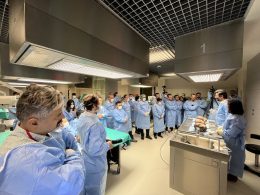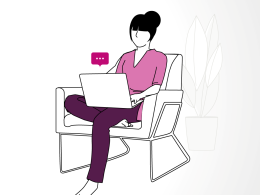- 217% year-on-year increase in prescriptions for back pain across the UK since 2017
- Bolton, Southport and Formby and Oldham are the areas worst affected by back pain
- UK-based doctor reveals the leading causes of back pain and how we can work to prevent injury
March 2023 – In light of 4 in 5 adults suffering from back-related issues during their lifetime, Northgate Vehicle Hire analysed UK prescription data for back pain medications to find out where in the UK is suffering most [2]. To accompany this research, in-house experts spoke to Dr Hana Patel, General Practitioner, about the leading causes of back pain and how Brits can work to lower their chances of injury.
Driving, posture & lack of physical fitness are the leading causes of back pain
Dr Hana Patel reveals the leading causes of back pain: ” The most common cause of back pain is muscular injury or sprain which can be heavily dependent on your day-to-day lifestyle. As a general practitioner, a high proportion of cases where patients develop back pain comes largely as a result of strain caused by activities like driving, their general posture and an all-around lack of physical fitness. Men, women, and different age groups are impacted differently or are more susceptible to back pain. Generally, the estimate is that around one-third of people will be affected by back pain during their adult life. Back pain generally affects women more than men due to pelvic structural differences.
Here are my top five stretches for reducing back pain:
Whether you are looking to prevent back injuries or reduce the pain you are currently experiencing, taking some time each day to stretch this part of your body is vital, particularly at the beginning and end of each day. In the morning it is common to feel stiffness in your back due to decreased blood flow from sleeping, whilst tension, particularly in your lower back, will build up throughout the day. Here are my top five stretches to incorporate into your daily routine:
- Bridge Exercise: Lie on your back with your knees bent. Raise your hips off the floor until they line up with your knees and shoulders. Hold for three deep breaths.
- Cat and Cow Pose: Keep your hands shoulder-width apart and your knees directly below your hips. Inhale deeply, curve your lower back and bring your head up. Exhale deeply and bring your abdomen in, arching your spine and bringing your head and pelvis down.
- Shoulder Rolls: Stand with feet shoulder-width apart and your arms stretched out at your side. Rotate shoulders in a forward direction making big circles with them and then rotate them backwards.
- Sphinx Cat: Lie face-down on the floor with your legs extending behind you, keeping your arms at your sides. Press your forearms into the floor and lift your head and chest off the floor.
- Supine Spinal Twist: Lying on your back, bend the right knee and place the right foot on the left knee. Exhale drop the right knee over to the left side of your body, twisting the spine and low back. Breathe and hold for 6-10 breaths. Repeat on the other side.
Please ensure you are only doing exercises within their physical capability, if you have any reservations speak to your doctor first.”
*Images of each stretch can be found in the dropbox folder below
People in the North West of England are more likely to suffer from chronic back pain
Bolton, a town in Greater Manchester, has the highest proportion of people suffering from back pain in the UK. The prescription data shows that an average of 122.1 prescriptions are prescribed each year per 1,000 people. This is a staggering 177% higher than the UK average of 44 annual prescriptions per 1,000 people. Bolton has also seen the ninth largest year-on-year increase in appropriate medication, with an average 243% increase each year since 2017.
Southport and Formby rank second with 115.6 prescriptions each year per 1,000 people, followed by Oldham (111.9 prescriptions), Blackpool (93.5 prescriptions) and Tameside and Glossop (92.9 prescriptions) respectively ranking third, fourth and fifth.
As demonstrated, there is a heavy concentration of Brits experiencing back pain in the North West of England, with all of the top ten most affected areas falling in this region. This is further reflected by Bury (263%), South Sefton (253%), Manchester (249%) and Southport and Formby (249%) all seeing the top five largest year-on-year prescription increases since 2017, with the Northern city of Bradford seeing the third biggest increase of 250%.
Please include credit the wider study if this research is used: https://northgatevehiclehire.co.uk/blog/features/uk-drivers-and-back-pain-report









